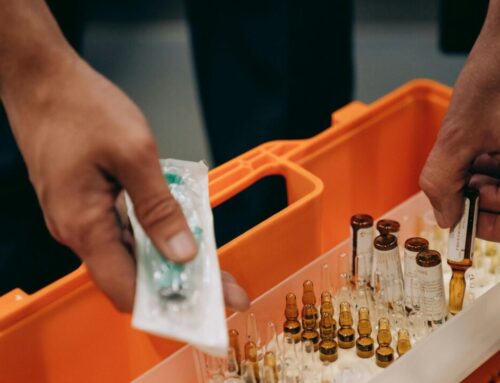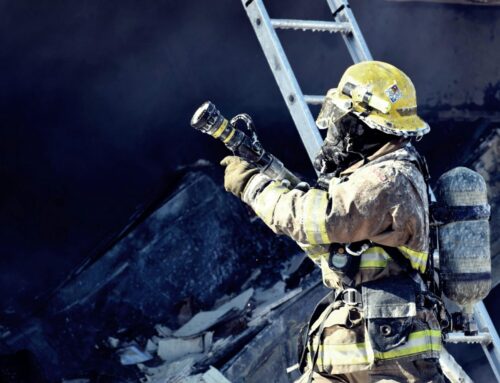How To Maintain the Integrity of Traveling Specimens
Most of us are familiar with a routine blood sample as the starting point for checking up on or diagnosing potential health issues. But once your precious blood leaves in a sample vial, do you ever think about where it goes and how crucial the safe and secure transport of your blood is?
The integrity of a specimen depends on the accurate preparation of the patient, collection of the blood, and handling and transportation of the specimen, all before the actual analysis and/or use of the specimen.
Establishing the protocols in place to ensure the safety and integrity of blood during storage and transportation is essential to provide optimal specimens for testing and transfusion.
In the example above, a blood sample that is degraded could alter your test results, causing a misdiagnosis. Although serious, there are even more dangerous effects from a degraded blood specimen. For instance, if contaminated blood is used for a blood transfusion, it can result in harm or potentially death to the patient.
According to the American Society of Hematology, “In the US, bacterial contamination is considered the second most common cause of death overall from transfusion (after clerical errors) with mortality rates ranging from 120,000 to 185,000 donor exposures. Estimates of severe morbidity and mortality range from 100 to 150 transfused individuals each year.” (Hillyer et al., 2003)
Of these, collection of the wrong blood from storage locations is one of the most common causes of serious transfusion accidents. It is the staff’s responsibility to be extremely diligent to match patient identification details to approved documentation when removing blood from Blood Bank refrigerators. (Hillyer et al., 2003)
These mistakes, even if caught before potentially harming a patient, are not without consequences. Blood is an excellent culture medium for bacterial growth, which is why in the United States, blood and blood products must be maintained at 1-6°C for storage and 1-10°C for transport. Packed red blood cells (PRBC) that reach 10.1°C or are out of the proper refrigerated temperatures for more than 30 minutes, become unsafe to transfuse and should be disposed of. (Rehber, 2021)
Currently, the main means of refrigerant for transported blood is wet ice, which holds a temperature of 0°C, much too cold to meet parameters for blood transportation. Despite current and proposed regulations of the Food and Drug Administration (FDA), American Association of Blood Banks (AABB), the Joint Commission for Accreditation of hospital Organizations (JCAHO), and the College of American Pathologists (CAP), wet ice is still being used for blood transportation because it is believed to be the only option.
When it comes to the transportation of specimens, similar risks are present. The Department of Transportation and the U.S. Postal Service regulate the safe ground transportation of specimens. Consider the following for how to comply with federal regulations of the packaging and shipment of biological substances:
• Use triple packaging consisting of a leak-proof primary receptacle (e.g., a blood tube), a leak-proof secondary package (e.g., sealable plastic bag), and an outer package (e.g., cardboard box or cooler if you are transporting it yourself).
• Place absorbent materials between the primary receptacle and the secondary packaging and be sure to make sure there is no contact between primary receptacles if they are placed in the same sealable plastic bag.
• Secure the secondary packaging with cushioning material (e.g., bubble wrap).
• When you are done, the package should be able to withstand a drop from about four feet. (Gile, 2009)
It is the storage manufacturer’s responsibility to ensure all storage carriers, cases and refrigerants meet the requirements for this type of specimen transportation. The enforcement and regulation of the proper storage and transportation conditions are essential to prevent contamination, degradation, and potential harm to a patient.
We recommend using a quality insulated container to keep sensitive materials at desired temperatures for blood transportation, depending on the applications or need, with the use of custom-made Phase Change Materials (PCMs). A PC0 with the custom insulator between the blood units and the PCM can maintain the blood at its desired temperature. More importantly, Thermal Custom Packaging’s PCMs, totes and insulators prevent blood from falling below 1° Celsius, which is out of specification. Each Tote has an internal formed well making them durable, easy to clean and sanitize. Learn more and get the go-to tote for specimen transportation here.
1. Hillyer, C. D., Josephson, C. D., Blajchman, M. A., Vostal, J. G., Epstein, J. S., & Goodman, J. L. (2003, January 1). Bacterial contamination of blood components: Risks, strategies, and regulation: Joint ash and AABB educational session in transfusion medicine. American Society of Hematology. Retrieved March 3, 2022, from https://ashpublications.org/hematology/article/2003/1/575/18663/Bacterial-Contamination-of-Blood-Components-Risks
2. Rehber, R. (2021, November 16). What should the blood storage conditions be like? Uncategorized English. Retrieved March 3, 2022, from https://coolermed.com/en/blood-storage-conditions/
3. Gile, T. J. (2009, February 20). Transporting specimens. OSHA Healthcare Advisor RSS. Retrieved March 3, 2022, from http://hcblogs.blrstage.com/osha/2009/02/transporting-specimens/
4. National AIDS Control Organization, & National Blood Transfusion Council. (n.d.). Division of Blood Transfusion Services. Storage and transportation of blood and its components. Retrieved March 3, 2022, from http://nbtc.naco.gov.in/assets/resources/training/8.pdf
Dr. Clifford Glade
Thermal Custom Packaging
info@thermalcustompackaging.com
www.thermalcustompackaging.com



